How to ferment raspberry leaves at home
Herbal teas are much healthier than traditional ones. They do not contain caffeine and its analogues, but they have a number of beneficial properties. Doctors and nutritionists recommend using them in your daily diet. One of the tastiest and most aromatic options is raspberry tea.
If in summer time the brewed raspberry leaves have a rich aroma, then in winter their taste is less pronounced. To achieve a darker color and a pronounced taste, they are fermented. This is a difficult and time-consuming procedure, however, thanks to it, dried herbs become more useful and are not inferior in gastronomic qualities to ordinary tea.
The content of the article
Why ferment raspberry leaves
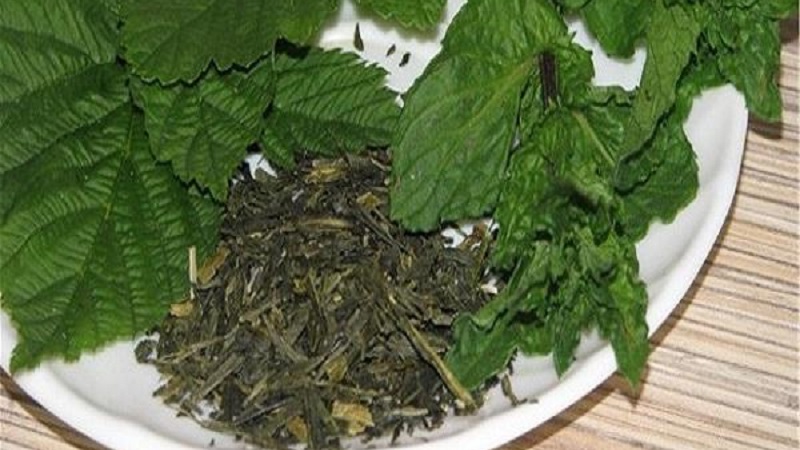
Fermentation is the breakdown of organic matter under the influence of enzymes. The procedure converts insoluble compounds in leaf tissues into soluble and absorbed by the body. For fermentation, bacteria are responsible both on the product itself and in the air.
Fermented raspberry tea turns out to be more aromatic than just dried leaves. It also has a rich brown color and unusual taste.
This is how traditional black tea is prepared. And thanks to fermentation, it turns out to be so dark and tart (by comparison, green tea is not fermented).
It is interesting! Not only raspberry leaves are fermented. For this, greens of other fruit and berry trees, as well as ivan tea, are suitable.
The benefits and harms of fermented raspberry leaf tea
Fermentation of the raspberry leaf not only enhances the aroma and flavor of the food, but also makes it healthier. This tea is recommended to drink not only as a substitute for traditional hot drinks, but also as a cure for colds and a remedy to increase immunity.
Raspberry leaves have a number of beneficial properties:
- Anti-inflammatory. It is believed that the action of raspberry leaves is not inferior to aspirin, but at the same time they are more useful.
- Expectorant. The product liquefies phlegm and removes it from the bronchi.
- Hemostatic. Stops both external and internal bleeding.
- Antitoxic. It removes slags, toxins, heavy metals from the body.
- Diaphoretic. Raspberry tea increases perspiration. This helps to lower body temperature.
- Immunostimulating. Fermented tea activates immune processes, helping to cope with colds.
- Fortifying. Tones up the body and improves its condition. Restores vitamin and mineral balance.
- Bonding. The product helps with diarrhea.
Tea made from fermented raspberry leaves will not benefit the body, but harm if there are contraindications:
- constipation;
- an allergic reaction to raspberries;
- gout.
Important! Raspberry tea is not used as the main treatment - it is only an adjunct to the main therapy. They use the drink for medicinal purposes only after consulting a specialist.
Collection and preparation of leaves
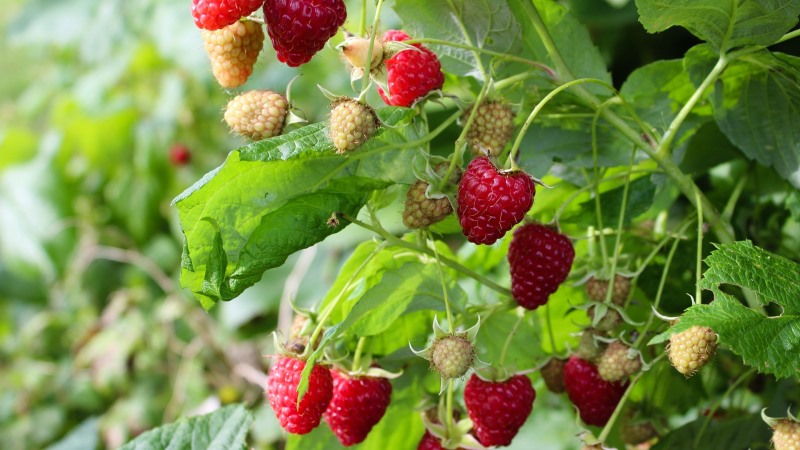
Before you can ferment raspberry leaves at home, you need to collect and prepare them. This stage has several rules and nuances.
Raspberry greens are harvested from spring to autumn. It should be borne in mind that in spring the leaves will be more tender and healthy. In autumn they are rough, requiring a longer fermentation, but they also have the most pronounced aroma.
Note! If you collect a large number of leaves from the bush before fruiting, this will slow down the process of ovary formation. In spring, no more than 2 shoots are removed from 1 bush.
When choosing leaves, pay attention to the following parameters:
- Gathering place... Bushes growing near roads and industrial sites are not suitable for harvesting for the winter. They contain heavy metals.
- No chemical treatments... Do not pick raspberry greens after spraying with purchased insect and pest repellent.
- Appearance. The selected leaves should be free of stains, mold, damage, cobwebs and other traces of diseases and pests.
- The form. The sheet plates must have the correct shape. Deformed leaves indicate a viral infection.
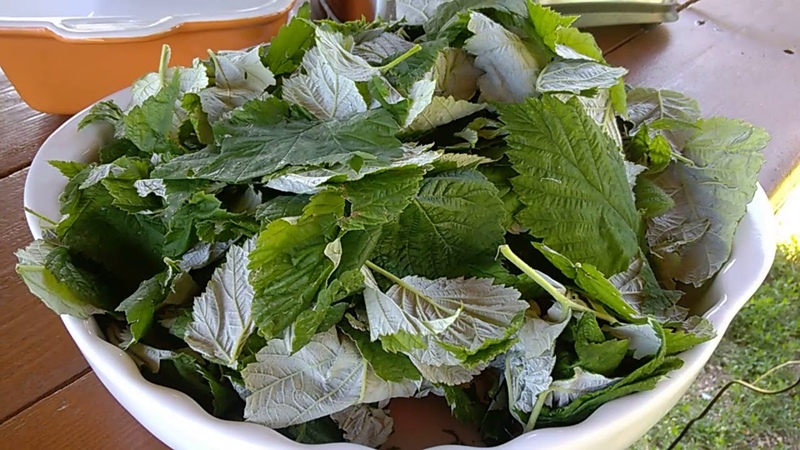
You cannot wash the leaves, this will interfere with the drying before fermentation. Leaf plates are sorted out and shaken off debris.
If the raw material was collected in the fall, remove hard veins and petioles. This will make fermentation easier.
Fermentation stages
The fermentation process of raspberry leaves consists of several stages. It includes both preparation and fermentation itself.
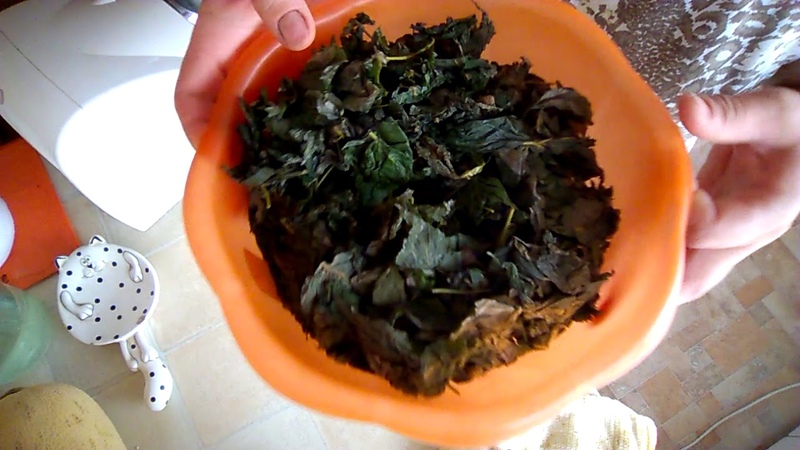
Drying
Excess moisture in the raw material complicates further processing and worsens the quality of fermentation. The result is poor quality tea with a musty smell. Therefore, cooking begins with wilting.
It is during this stage that the destruction of chlorophyll and other elements that give the raw herbal smell begins. At the same time, essential oils accumulate and unfold, due to which the raspberry aroma is revealed and becomes more saturated.
The leaves are dried in two ways. Here is one of them:
- The leaves are placed on a cloth mat or pallets in a layer 1-2 cm thick. On top they are covered with one layer of gauze to protect them from dust and insects.
- Pallets with leaves are placed in a place with a temperature of at least 24 ° C. The hotter it is outside, the faster the process will complete. Air humidity should not exceed 70%. Raspberries are dried outdoors in a shaded and wind-protected area; or indoors in a well-ventilated area with suitable conditions.
- The raw material is left to dry for 6 hours. Then it is turned over and left for another 6 hours. If necessary, the process is repeated.
In this way, the duration of the procedure varies from 12 to 48 hours. It depends on temperature and humidity.
The second way looks like this:
- Prepare a clean dry cloth. It should be as tight as possible. A tablecloth, linen, a clean rug will do.
- The leaves are laid out over the entire area of the material in one layer. The fabric with greens is rolled into a tight roll.
- After 6 hours, the tissue is unrolled and the leaves are checked. If they do not wither, then they are transferred to another material and wrapped again.
To check if the leaves have faded, they are bent. If no crunch is heard in the veins, then the raw material is ready. The sheet plate is squeezed in the hand. When unclenching the palm, they should not straighten.
Freezing
After the leaves have wilted, they are frozen to destroy the cell membranes of the product and force the juice to flow out.
The dried raspberry leaves are poured into a bag and sent to the freezer. It is enough to hold the raw material there for 24-48 hours. It is possible to leave the leaves in the freezer for a month.
This stage allows you to achieve correct fermentation as soon as possible. The longer the food is in the freezer, the easier it is to work with.
Note! Freezing is not considered a mandatory step in leaf fermentation. This procedure simply makes it easier and faster to ferment raspberry greens.
Destruction of the leaf structure

Raspberry leaf juice contains the enzymes needed for successful fermentation. When freezing them through the membranes of raspberry leaf plates, not enough juice is released. To achieve the desired effect, the structure of the raw material is destroyed.
This is done in one of the following ways:
- Twisting. The leaves are stacked in a stack of 5 pieces. Twist each stack with your fingers.The resulting bundle is rolled with pressure between the palms until it all darkens from the juice. After that, the bundle should not unfold on its own.
- Kneading. The leaves are poured into a large bowl. They are crumpled by hand as if kneading dough. After the procedure, each leaf plate should darken from the juice. They are left in this form or each individual leaf is folded into a tube.
- Meat grinder. The leaves are passed through a meat grinder. Granulated tea is made from the resulting granules.
It is difficult to decide which of the described methods is the most correct. Better to do it 1 or the second method.
Fermentation process
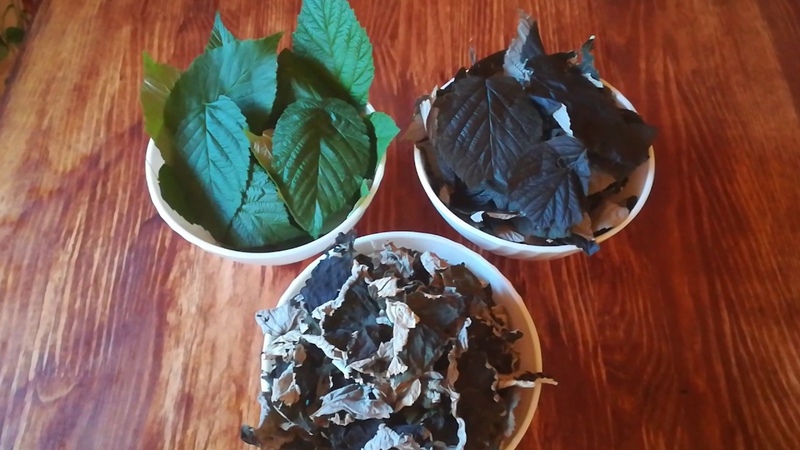
As soon as the juice is released on the surface of the leaf plate, fermentation begins... It consists of several stages, each of which is accompanied by its own enzyme. If the sequence of steps is disrupted or one of the enzymes is turned off, the redox process will not end, which will negatively affect the quality of the tea.
To exclude the likelihood of violation of the fermentation technology, in the room where the product will stand, set the optimum temperature + 22 ... + 26 ° C. At temperatures below + 15 ° C, fermentation stops, if the indoor performance is above + 30 ° C, then the compounds that give strength and pleasant taste turn into an insoluble form.
The fermentation process looks like this:
- A layer of raspberry leaves 7-10 thick is placed in a container with a plastic or enameled metal lid. If the layer thickness is less than the norm, then the fermentation will be of poor quality. The raw materials placed in the container are pressed by hand.
- A plate and oppression is placed on the future tea. From above, the structure is closed with a damp natural cloth or gauze. The container is closed with a lid so that there is a gap for air access.
- The fabric is checked periodically. If it is dry, then it is moistened again.
The fermentation process of raspberry leaves lasts from 6 to 10 hours. In this case, the smell begins to gradually increase. The mass is considered ready when the aroma is most intense. With a longer fermentation, the aroma becomes weaker, so the leaves should not be allowed to stand longer than the prescribed period.
Methods for Drying Fermented Tea
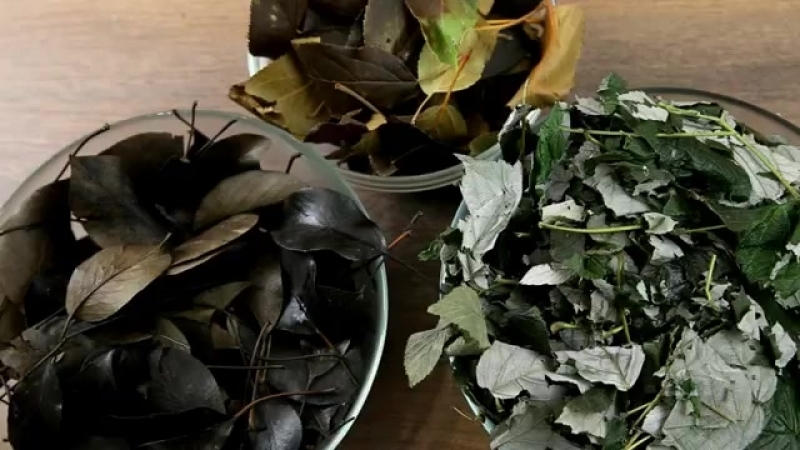
The fermented leaves are prepared before drying. The preparation method depends on the method of destruction of the structure:
- The twisted leaves are cut into small circles. If you twisted 1 sheet at a time, then this is not necessary.
- Crumpled straight leaves are dried in this form. After drying, if desired, grind them.
- Those twisted through a meat grinder are simply loosened by hands on a container in which they will be dried.
There are many ways to dry fermented raspberry tea. The list contains the most popular options:
- Oven. Cover the baking sheet with parchment paper. A layer of fermented raw materials is poured onto it. Within an hour, the product is dried at a temperature of 100 ° C, then the indicators are reduced to 50-60 ° C and left until the residual liquid is removed. Stir the tea on a baking sheet every 20 minutes. If possible, it is better to additionally turn on the convection mode.
- Conveyor grill. The tea is placed on a tray and placed in an airfryer heated to 150 ° C. Under these conditions, the leaves are left for 10 minutes. Then they are stirred and the temperature is lowered to 85 ° C for 20 minutes. During the entire time of drying the tea, the airfryer should remain open.
- Pan. Tea is poured into a dry frying pan in small portions. First, it is fried for 10 minutes over medium heat, and then for 20 minutes over low. The leaves are constantly mixed.
Tea is taken out of electrical appliances when most of the leaves will break, not break.
After roasting tea in an airfryer, oven or in a frying pan, final drying is required... Raspberry leaves are poured into a bag and hung out in the sun outside. Depending on the weather, this process takes from 1 day to a week.
To know that raspberry tea is ready, one sniffs it.The finished product will not emit a pronounced aroma. If you rub it in a bag, it will make rustling sounds. If granulated raw materials were used (twisted in a meat grinder), then in a state of full readiness it does not crumble when pressed, but breaks off in small pieces.
Storing fermented tea
Ready tea is tried for the first time not earlier than a month later. If you do this earlier, then its taste will not be saturated enough.
The fermented raspberry leaves are stored in glass jars, cloth bags, metal containers. The place where the tea stands should be protected from moisture and direct sunlight.
Making tea from fermented raspberry leaves
Raspberry leaves are used instead of traditional tea. They are brewed both as a main ingredient and as an additive to drinks.
There are many ways to make black tea. The simplest and best of them is to take 2 tsp of tea for 200 ml of water. Pour the leaves with warm water and let it brew for 15 minutes.
Sometimes raspberry tea is brewed in a teapot. In a container of standard size, add 2-3 tbsp. l leaves and pour boiling water. The mixture is allowed to brew for 20 minutes, then used as a liquid infusion.
It is interesting:
What is fermented cabbage, why is it good and how is it cooked.
A step-by-step guide to fermenting currant leaves for tea at home.
Conclusion
Making fermented raspberry leaf tea is easy. The recipe includes several mandatory stages, during which the raw material goes through several levels of processing. If you follow all the rules and take into account the nuances, then even a beginner will cope with the fermentation of raspberries.
Fermented herbal teas are not only delicious, but also healthy. They contain many useful substances that have a positive effect on the state of the body.